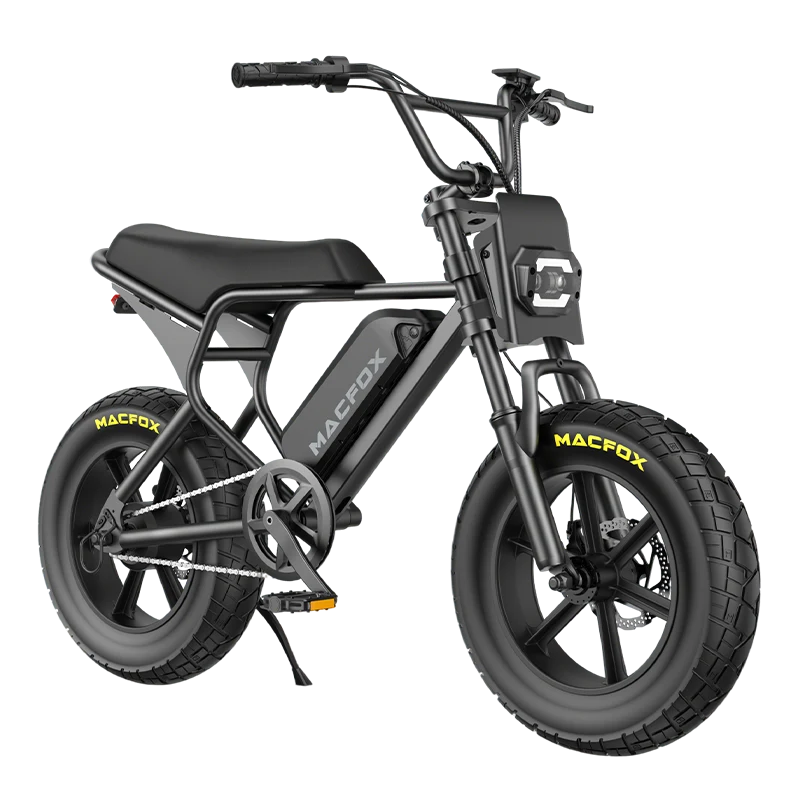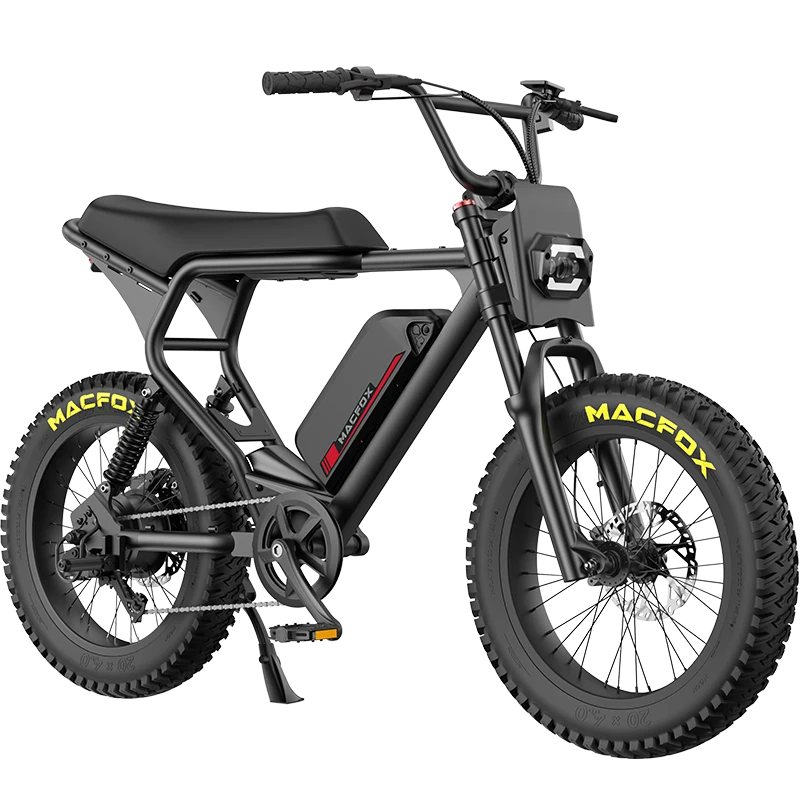In the vast and bewildering world of electric bikes, there are not one, not two, but an astonishing three distinct types of ebikes! You may be struck with bewilderment upon discovering the individual peculiarities, benefits, and drawbacks that each of these types presents, rendering them suitable for different cases and preferences.
Therefore, this article aims to delve deep into the three main types of ebikes and aid you in your quest for the perfect match.
Contents
- 1.Types of eBikes
- 1.1 Type 1 ebike
- 1.2 Type 2 ebike
- 1.3 Type 3 ebike
- 2.Factors to consider when choosing an e-bike
- 2.1 E-Bike Categories
- 2.2 Commuter eBikes
- 2.3 Mountain eBikes
- 2.4 Folding eBikes
- 2.5 Cargo eBikes
- 3.Maybe it will be helpful for you
Types of eBikes
There are three types/classes of eBikes: Type 1, Type 2, and Type 3.
Type 1 ebike
Pedal-assist ebikes, also called Type 1 ebikes, reign supreme among electric bikes. These bikes possess an advanced motor that acts as a personal assistant when pedaling. At a speed of 20 mph, the motor ceases to function. Typically categorized as bicycles, Type 1 ebikes are lawful to use on roads and bicycle paths in many regions.
One of the remarkable perks of riding a Type 1 ebike is that it enables riders to traverse longer distances with minimal exertion. The motor adds a touch of wizardry to pedaling, rendering it simpler to conquer steep slopes and winds. Unlike other ebikes, Type 1 ebikes are more reasonably priced, with a cost range of $500 to $2,000.
However, Type 1 ebikes do have some limitations. The motor's assistance is limited to a maximum speed of 20 mph, which may not be fast enough for some riders. Additionally, the motor can only provide assistance while the rider is pedaling, so the bike may feel heavy and difficult to maneuver when the motor is not engaged.

Type 2 ebike
Type 2 ebikes, also known as throttle-assist ebikes, have a motor that can be activated with a throttle, allowing the rider to travel without pedaling. The motor can assist up to a speed of 20 mph. Type 2 ebikes are classified as bicycles in some areas but are considered motorized vehicles in others and may require a license or registration to operate on public roads.
The foremost advantage of owning a Type 2 ebike is its ability to provide an uninterrupted riding experience, particularly for individuals who may be unable to pedal for prolonged periods. The throttle's presence enables riders to accelerate rapidly and maintain a constant speed without pedaling. Additionally, these ebikes are particularly useful for commuting through urban areas characterized by heavy traffic or hilly terrain.
Nevertheless, Type 2 ebikes do have some inherent limitations. They are more expensive than their Type 1 counterpart, with prices ranging from $1,000 to $4,000. Additionally, the regulatory framework surrounding them is often murky, with their legality subject to interpretation based on local regulations. Reliance on the throttle can also lead to diminished battery life, and they may not provide the same level of exercise as Type 1 ebikes.
Type 3 ebike
The speed pedelecs, which are well-known as the type 3 ebikes, are designed for riders who want to travel at higher speeds. With a maximum motor assistance limit of 28 mph, they are considered motorized vehicles in most areas and necessitate licensing, registration, and insurance to ride on public roads.
The speed and efficiency of Type 3 ebikes are their primary selling points. They facilitate riders in covering more ground in less time, making them the perfect fit for long-distance commutes or touring. The superior output of their motors also allows for greater convenience in navigating treacherous terrains and windy routes.
While these ebikes have numerous benefits, they are not suitable for everyone. They are more expensive than their counterparts with prices ranging from $2,500 to $10,000. Additionally, legal requirements and regulations can be a hurdle for some riders. Moreover, inexperienced riders or those without proper safety gear may find the increased speed dangerous.
Below is an image of a detailed e-bike policy in California.
Factors to consider when choosing an e-bike
Choosing the right e-bike can be overwhelming, especially with the variety of options available. Here are some factors to consider when choosing an e-bike:
- Purpose: Consider the primary use of the e-bike, such as commuting, exercise, or leisure.
- Range: Consider the distance you need to travel and choose an e-bike with a range that meets your needs.
- Motor power: Consider the power of the motor, measured in watts, and choose one that provides enough assistance for your intended use.
- Battery type: Consider the type of battery and its capacity to ensure it meets your needs.
- Cost: Consider the initial cost of the e-bike and its long-term cost-effectiveness.
E-Bike Categories
In addition to the three types of eBikes, there are also different categories of eBikes that are designed for specific purposes.
Commuter eBikes
Commuter eBikes are designed for riders who use their bikes to get to work or school. These bikes are typically designed to be lightweight and easy to maneuver in traffic. Commuter eBikes often have features such as fenders, racks, and lights, making them more practical for everyday use.
Some commuter e-bike products you can explore like: Macfox
Related Reading: Discover the benefits of riding a Macfox e-bike
Mountain eBikes
Mountain eBikes are designed for off-road use and are equipped with features such as suspension, wider tires, and stronger brakes. These bikes are ideal for riders who enjoy riding on rugged terrain and want a bike that can handle the demands of off-road riding.
Folding eBikes
Folding eBikes are designed for riders who need a bike that can be easily stored or transported. These bikes can be folded down to a compact size, making them easy to carry on public transportation or store in a small apartment or office.

Cargo eBikes
Cargo eBikes are designed for riders who need to carry large or heavy loads. These bikes often have a longer wheelbase and are equipped with cargo racks or baskets that can carry groceries, packages, or even children.
FAQs
Are electric bikes legal?
Yes, electric bikes are legal in most areas. However, the legal classification and regulations may vary depending on your location.
How fast do electric bikes go?
The maximum speed of an electric bike depends on its type and motor power. Type 1 ebikes have a maximum speed of 20 mph, while Type 2 and Type 3 ebikes can reach up to 28 mph.
Do electric bikes require a license?
It depends on the type and local regulations. Type 1 ebikes are usually classified as bicycles and do not require a license. Type 2 and Type 3 ebikes may require a license, registration, and insurance to operate on public roads.


















